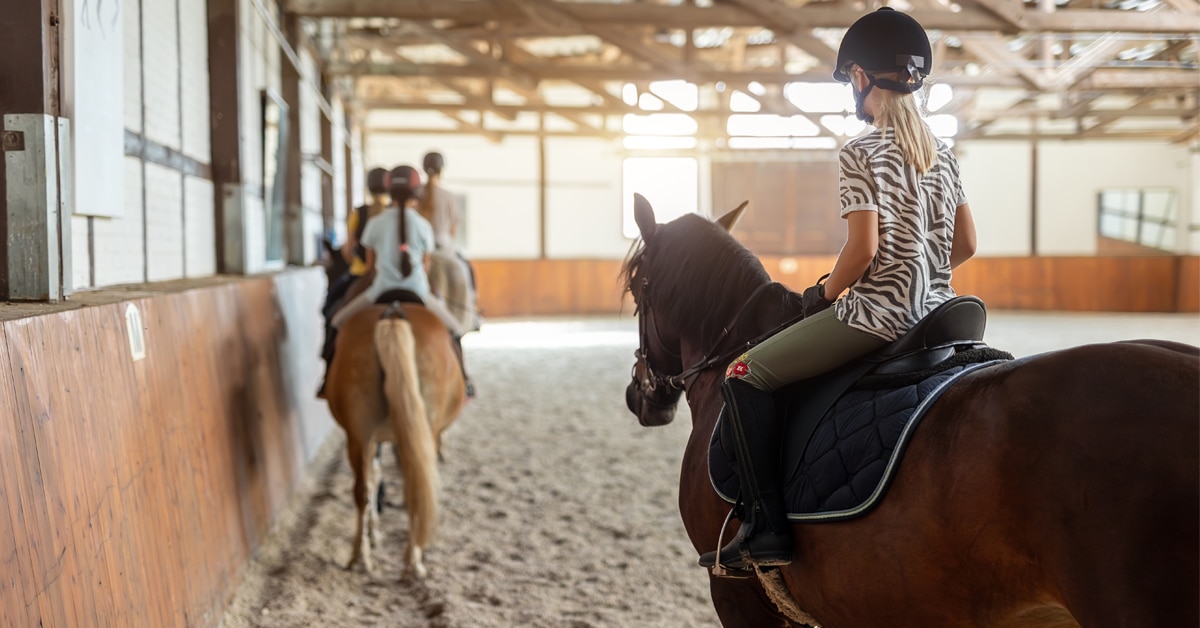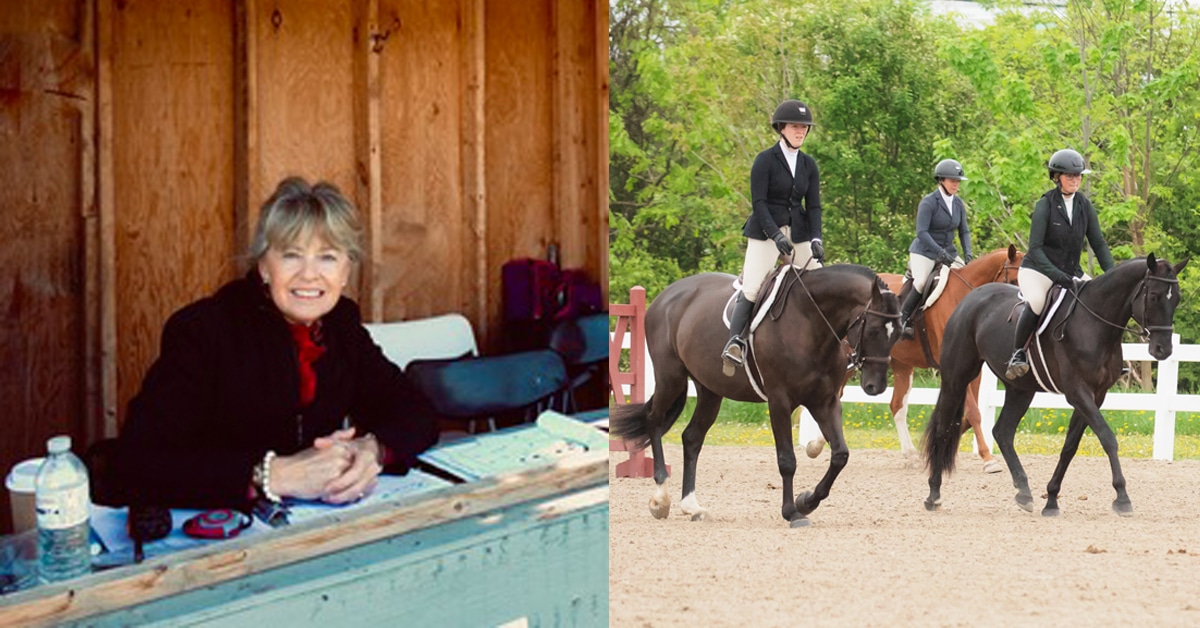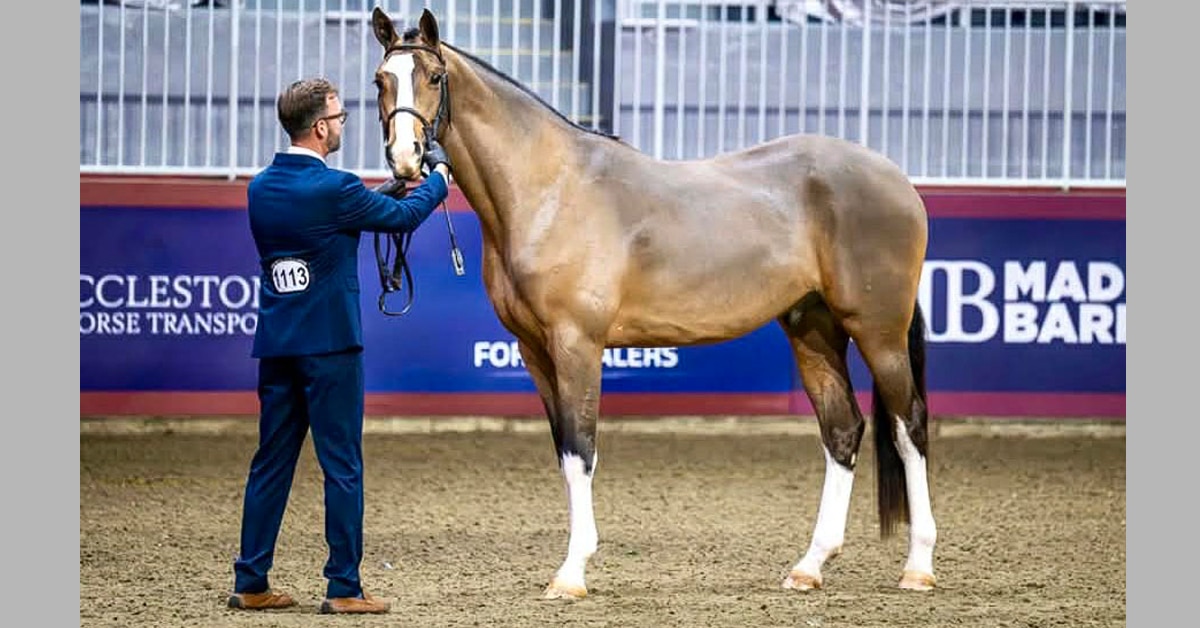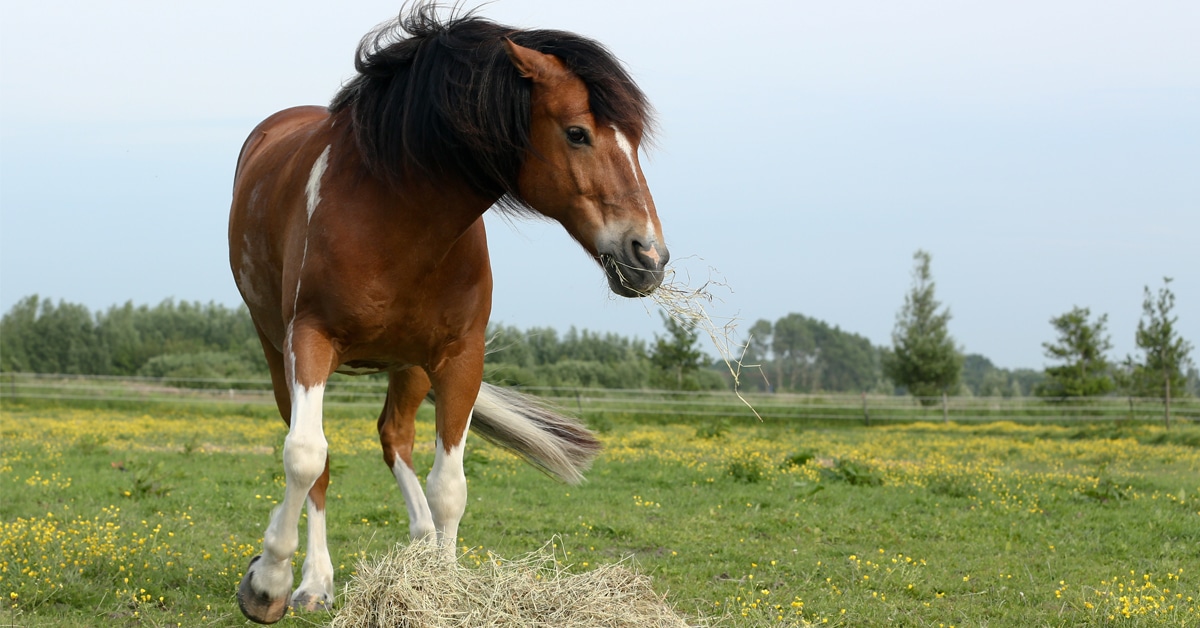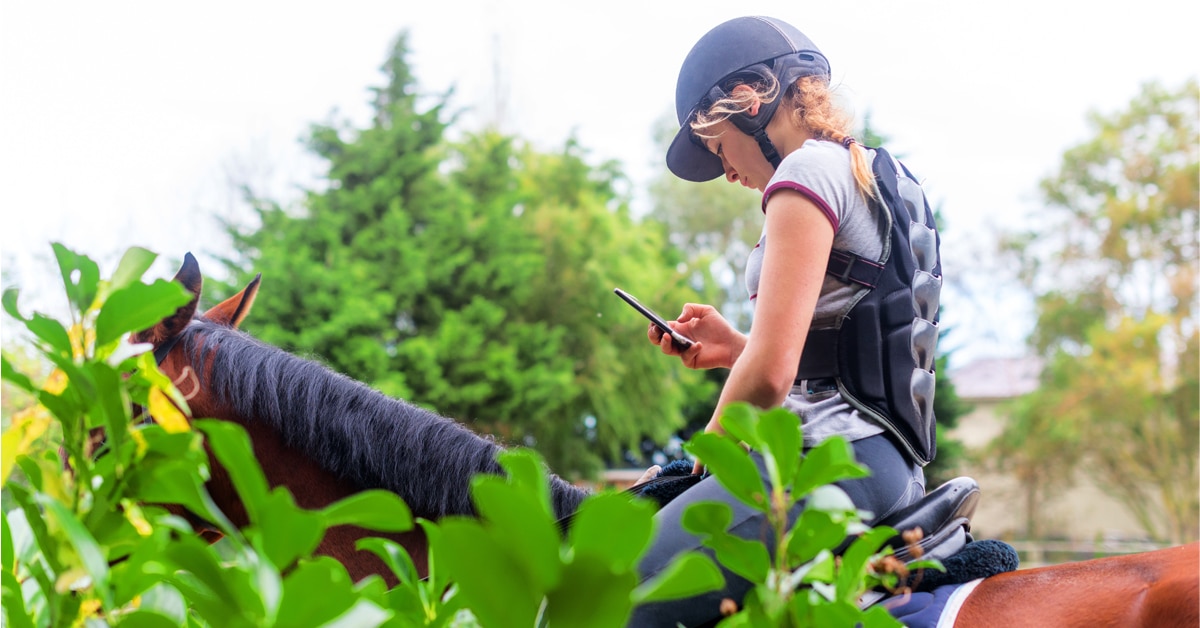One of the most common equitation pitfalls is the struggle to keep one’s heels down and grounded. This ability is integral to more than just a pretty picture; it reflects an effective leg and a secure seat. It also shows the interaction between a rider’s core stability and both tissue and joint extensibility at the pelvis and ankles.
Heel position can also be affected by interactions between other length-tension-stability relationships throughout the body due to adaptations from injury that require an in-depth assessment. Note that your nervous system (core stability and control) impacts dynamic tissue extensibility/flexibility, so a neurokinetic assessment by a trained therapist is useful to improve performance and dynamic stability/mobility.
The exercises below are geared towards increasing pelvic and ankle mobility and the core strength that allows us to effectively use that mobility, with the end goal of achieving an effective leg on your horse and a balanced and secure seat.
Hip Hike (above left)
In order to maintain a heels-down position, your pelvis needs to be able to hike on either side, otherwise you tip off your horse to the other side and are unable to ground that foot. Stand with your arms at your sides. Bend your right knee and hike your left hip up towards your armpit. Repeat frequently on both sides to improve mobility.
Knee-To-Wall Matrix (above centre)
The knee-to-wall matrix improves 3-D joint mobility and tissue extensibility at the ankle. With a bent knee, push your heel into the ground and pulse your knee towards the wall (5x aiming knee forward, 5x left, 5x right). Then complete 5 big knee circles in each direction, feeling movement through your ankle. The calf stretch with a straight opposite leg targets the other part of your calf that crosses your knee joint to improve muscle length.
Wall-Facing Squat (above right)
Assuming your core is firing, the wall-facing squat helps to strengthen your core in a heels-down position. Start with hands overhead and toes close to the wall. As you descend into the squat, the tendency is to poke your chin and arch your low back. The goal is to maintain a gently tucked/neutral chin, and a flat lumbar (lower) spine. When you descend to the point where you start to lose the correct posture, hold there for 5 seconds. Do 3 sets of 12 reps. Quality of this movement is paramount over quantity.
The Latest

